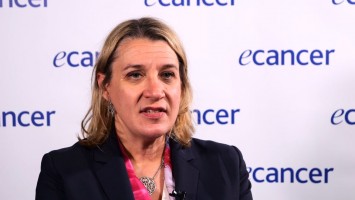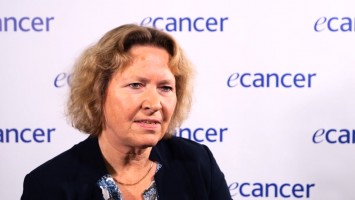ASCO 2013
Phase I study measures effect of ipilimumab and nivolumab combination in melanoma patients
Prof Jedd Wolchok - Memorial Sloan-Kettering Cancer Center, New York, USA
We launched a phase I clinical trial of the combination of nivolumab and ipilimumab in patients with melanoma. This was based on several lines of rationale. The first is that each one of those medicines has activity in melanoma and data was presented at this meeting and at past ASCO meetings demonstrating that ipilimumab impacts overall survival in patients with melanoma. In addition, nivolumab, while earlier in development, is showing signs of durable activity in patients with advanced melanoma. Together with that we have a body of preclinical evidence showing that blocking both the CTLA-4 pathway, which is the target of ipilimumab, and the PD1 pathway, the target for nivolumab, is a very potent combination in animal models of cancer. Both the colorectal cancer and melanoma in mice can be more effectively treated with a combination of antibodies than with either one alone.
What have you seen looking at this combination of the two?
Looking at the combination of nivolumab and ipilimumab, we first of all established a safety profile for the combination and showed that there is a maximal tolerated dose of 1mg/kg of nivolumab and 3mg/kg of ipilimumab which has an acceptable safety profile. There are some adverse events, they can be grade 3 or 4 adverse events, in 53% of patients but these are reversible with standard protocol algorithms and in fact the only events that have occurred in more than 10% of patients were asymptomatic laboratory abnormalities which sometimes resolved by themselves. In addition, another very important takeaway message is that the combination of nivolumab and ipilimumab at its maximally tolerated dose led to objective responses in 53% of the treated patients. And in those responding patients, all of them showed a greater than 80% reduction in the baseline tumour burden by the time of the first set of radiographic imaging.
Is this something that is ready to go into practice?
While the results show that the combination has a manageable safety profile and signs of very impressive efficacy, we don’t know yet whether it’s truly better than either ipilimumab or nivolumab alone. That is actually the next step, to perform a phase III clinical trial which establishes that as a fact. And that phase III clinical trial is now open to accrual globally where patients will be randomised to either the concurrent combination of nivolumab plus ipilimumab or nivolumab or ipilimumab alone.
Is this moving us towards a cure for melanoma?
I think this combination establishes a new level of activity for immunotherapy against melanoma. I think cure is always a tricky word to use because we don’t really know what it means; we don’t know when we can start using it. I think what it shows, what this combination shows, is that durable disease control can be obtained in a significant number of patients using this combination immunotherapy.
Is this therapy for all patients or does it have to be tailored to specific patients?
Another important area for investigation is how immunotherapy can be combined with targeted therapies. I think we’ve heard some continued reports of how challenging this could be because of safety interactions of these two approaches but there are still on-going trials using BRAF inhibitors and ipilimumab and certainly now a lot of discussion about using BRAF and MEK inhibitors and PD1 blocking antibodies together. I think it’s very important not to come to a conclusion about the use of targeted therapies with immunotherapy yet. It could provide even more benefit and the safety signals that have been generated thus far are just in small numbers of patients using concurrent therapy, there may be a lot of areas for further investigation using sequenced approaches as well.
What should the practising community make of this data?
I think the practising community should take away that there are multiple active agents in clinical development for patients with metastatic melanoma. A very important message is that patients should be referred for clinical trials whenever possible so that we can get these answers which we need about the value of the combination versus the single approved agent as quickly as possible.








